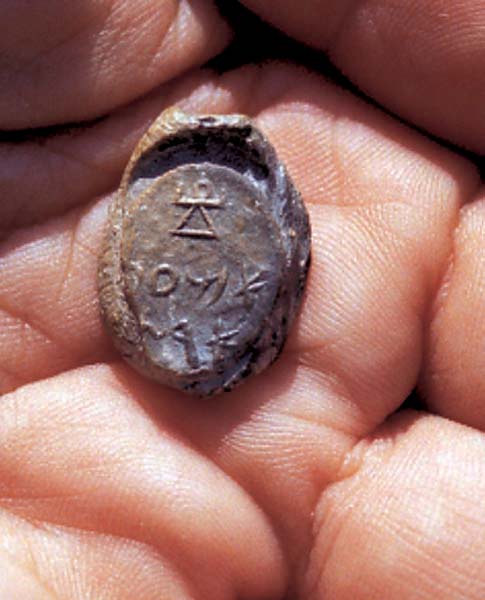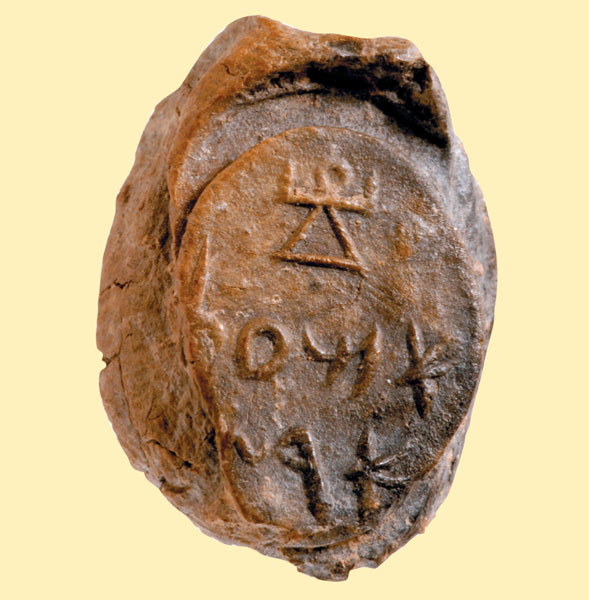Life and Death on the Israel-Lebanon Border
Excavation Yields Thousands of Seal Impressions
035
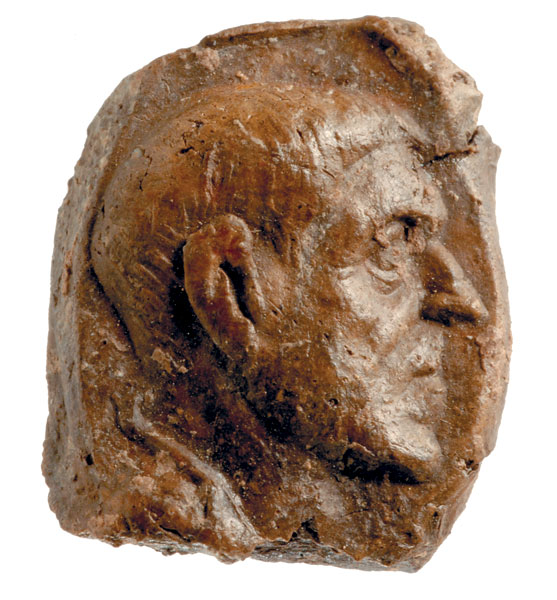
When you look at a map, the first things you notice are borders. But what did borders mean in ancient times? In the mid-1990s, we became curious about that very question. Both of us had been excavating in Israel for more than 25 years—and during those years we’d always taken the importance of borders as a given. We began wondering, however, if we might not be imposing a modern sense of definiteness onto our view of life in antiquity. Just what did it mean to live on a border in, say, 200 B.C.E.?
In archaeology, it’s easier to come up with an interesting question than to identify a site that might provide an answer. Our first challenge was to find a site on an ancient border—one that clearly occupied a border position according to ancient sources (as opposed to a site whose border position is surmised on account of archaeological evidence, such as Beth-Shemesh). That way, we’d avoid a circular “proof” in our interpretation of the evidence that we would find.
036
Our second challenge was to find a site occupied in the classical periods in which we worked (Persian, Hellenistic and Roman). We especially wanted to investigate the nature and rhythms of everyday life on the border.
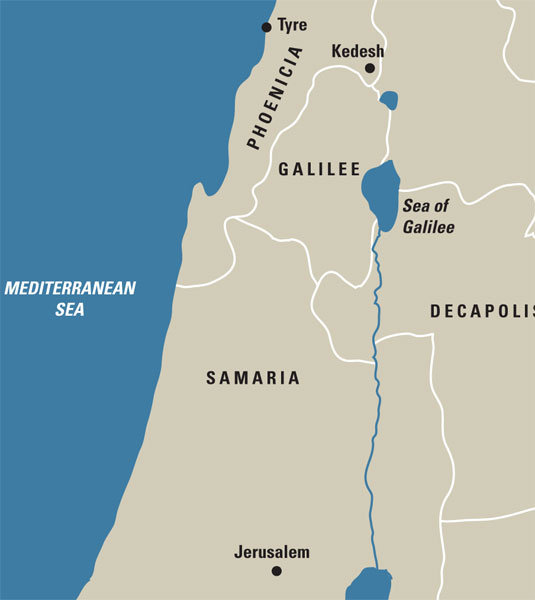
Our third challenge was to find a site that was small and out of the way—not a city or major sanctuary. We figured that the residents of such a place were more likely to have been ignored by government officials, and thus enjoyed more freedom of movement, which would give us a truer glimpse of everyday life.
From years of working in the region, we knew of one suitable place: the ancient tell of Kedesh, located even today on a border—the Israeli-Lebanese border. In Biblical-period accounts Kedesh was a mighty Canaanite citadel.1 Indeed, from the air Kedesh looks like a smaller version of Biblical Hazor, with a large upper acropolis and an even more expansive lower city. In classical-period references, however, Kedesh is called a village, never a city.2 Moreover, according to Josephus, it was a Tyrian village, the easternmost settlement of the Phoenician city-state of Tyre.3 Most significant for us, Kedesh stood on the edge of Jewish Galilee—on the border.
In the summer of 1994, Moti Aviam—then Israel Antiquities Authority district archaeologist for eastern Galilee—took us on an initial walkover of Kedesh. He told us of exploratory shovel tests that he and a fellow archaeologist, Yuval Portugali, had conducted a few years earlier on the lower tell. They had recovered considerable pottery and coins from the Hellenistic and Roman periods. Check off the only remaining criterion on our wish list! Encouraged by Moti, we decided to submit an excavation proposal, and in 1997 we took a few intrepid graduate students along for a two-week exploratory season.
The first question was, of course, where to dig? The lower tell of Kedesh is enormous: 13 acres. Clearly the classical-period village would have covered only a small part of this area. We mapped out 20 randomly placed 10 x 10 meter (33 x 33 feet) squares, cleared off every tiny fragment of pottery that we found on the surface and studied them for clues. Most of the fragments were undatable, but we did identify several as being from our target time-periods. With nothing more than this, we selected two of those squares for 10 x 10-foot probe trenches.
In the first probe, which was along the edge of the lower tell, we found flagstone paving against a stone circuit wall. (We weren’t able to excavate beneath the stones, so we don’t know if this is part of a Bronze Age Canaanite fortification or a later rebuilding.) In the second probe, which was situated toward the lower tell’s southern end, we dug down through about 3 feet of dirt and suddenly began finding whole pots. From a jumbled heap of debris against a stone wall, we excavated two juglets, a cooking pot, a flask, a stone grinder, several thick terracotta discs pierced by a single hole (were they loomweights?), five terracotta stoppers, a stone mortar and one-half of a stone trough. The style of the pottery suggested a date around 175–150 B.C.E.—just what we were looking for!
Apparently we’d come across the workroom or storeroom of a house. We were puzzled, however, by the amount of intact material. It’s unusual to recover whole vessels lying on the floor of a room—unless the occupants had fled in such a hurry that they’d left their possessions behind. The likeliest event to prompt this 037kind of flight is a battle in the immediate vicinity.

We turned to the ancient written source for clues and quickly identified a tantalizing possibility: A book of the Biblical Apocrypha (1 Maccabees 11:63–74) describes a battle in the vicinity of Kedesh. Jonathan Maccabeus, the Jewish Hasmonean, routs the forces of Demetrios, the Seleucid king, and chases him to Kedesh, which Jonathan’s men occupy for three days 038before returning to Jerusalem. The date of the battle? Sometime between 145 and 143 B.C.E.4 This would certainly explain our hastily abandoned mid-second century B.C.E. house (though we were still baffled by the fact that nobody had ever returned).
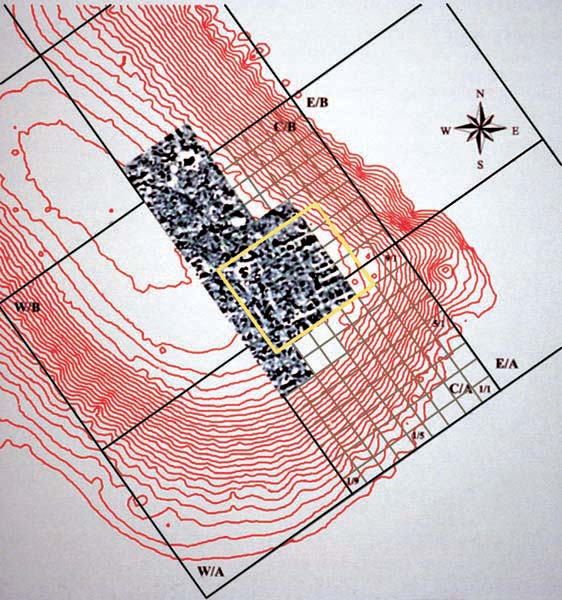
We had definitely recovered enough material to suggest that a large-scale expedition would be worthwhile.
Although we knew where one house was located, we were not sure where to dig next, since villages have a very different layout from cities. In cities, houses are closely arranged, one next to the other. In villages, however, there is a lot of land between houses for gardens, livestock, food storage and the like. How could we maximize our chances of finding and digging up houses, as opposed to empty garden plots? We decided to invest in a magnetometric survey, which identifies the outlines of underground buildings.
In spring 1998, Sharon spent a week at the site with Lewis Somers, of Geoscan Research. The resulting map, which covered almost all of the lower tell, presents the kind of vague picture that you can stare at for hours, identifying what appear to be patterns. But one area on Somers’s map revealed something completely unambiguous. Towards the southern end of the tell, just east of our second probe-trench, was the outline of an enormous rectangular building enclosing a large, off-center courtyard with one or two rows of rooms surrounding it. What was this enormous building doing in our little village? We immediately knew that we would spend time in our first season trying to find out.
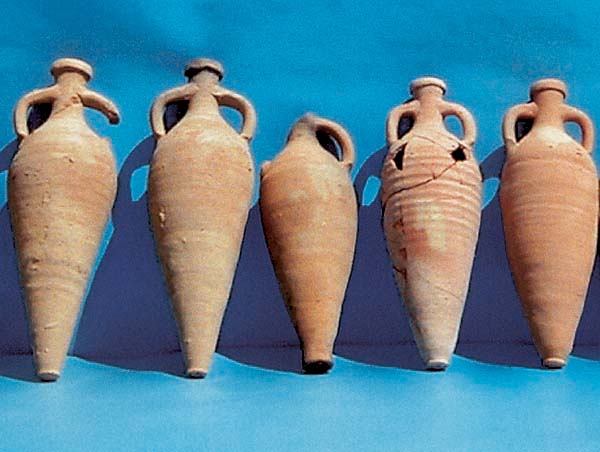
In June 1999, we moved our excavation team into the comfortable guest facilities of Kibbutz Malkiya, on whose land Tel Kedesh is located. One key question about the large rectangular outline on the magnetometric map was whether it indicated one building or a series of parallel and perpendicular wall lines belonging to several smaller buildings. To find out, we opened up two trenches at what looked to be the northwestern and southeastern corners of the building. In addition, we decided to dig in what appeared to be large rooms on the building’s northern and eastern sides.
It didn’t take long to discover that the image on the magnetometry map was really there in the ground: In each theoretical corner, we found actual huge wall blocks anchoring the building. On the east side were a series of sizeable rooms. On the north side was a plaster-floored room with 14 huge storage jars broken in place lying against the walls. On the floor lay a smashed table jug, originally from the Phoenician coast; in a plastered pit were fragments of two black-slip 039plates from Italy. Next to one wall lay the upper half of a wine amphora from Rhodes, whose stamped handles indicated a production date of 145 B.C.E. Standing inside this large, well-preserved room, it was easy to imagine Jonathan’s men breaking and flinging vessels around.
As is usual, our trench lines did not follow the lines of the building’s internal walls; thus, in addition to excavating the large storeroom, we also excavated a narrow strip of the adjacent corner room. At the southern end of this strip, we found over 25 small oil flasks, intact or broken in place, lying on the floor. They appeared to have fallen straight down, perhaps from wall shelves. And then, just in front of the flasks, we began to find the most breathtaking objects of the excavation: hundreds of bullae, small clay sealings (between half-an-inch to one-inch long), each stamped with an image impressed into the clay by a seal. These sealings indicated that the room had originally contained documents. The room must have served as an archive.
Although rare, clay sealings have been found elsewhere in Israel. Closest to ours in time period are the 38 late-fourth-century B.C.E. sealings from the Wadi ed-Daliyeh cave, north of Jericho.5 Until now, the largest single group of clay sealings found in an archaeological context in Israel are the 51 early-sixth-century B.C.E. sealings found by Yigal Shiloh in “The House of the Bullae” in the area of Jerusalem known as the City of David.6 Such parallels hardly prepared us for the quantities that we quickly amassed: more than 1,400 largely intact sealings, most with clearly legible images on one side and the imprints of papyrus fibers on the other.
Before describing these sealings in more detail, we must give credit to Richard Redding, our faunal analyst (a person who identifies animal bones) without whose help we might never have found these tiny objects. What could a faunal analyst have to do with such a find? Initially our student volunteers discovered these sealings while they were sieving dirt through quarter-inch mesh screens—a time-consuming and tedious job, but necessary for the recovery of small bones (called micro-fauna). Richard had requested that we sieve all the soil that we dug so that he could compile an accurate picture of the site’s food supply. We never thought we would recover hundreds of small clay sealings by this careful, eagle-eyed observation. But of course we were delighted.
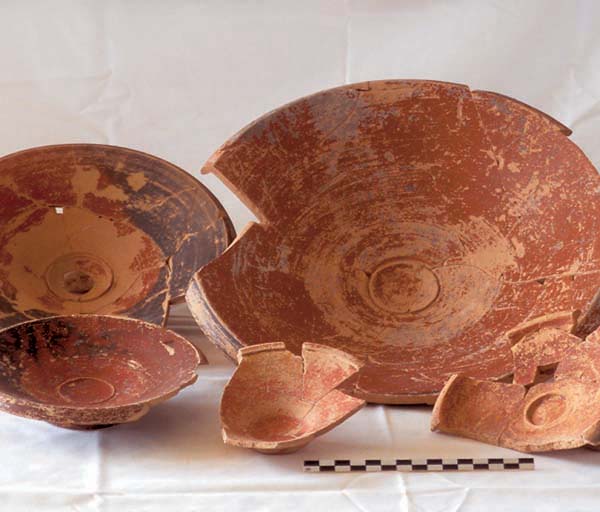
Most of the sealings are anepigraphic, that is, they don’t include any writing on them. (This makes our sealings quite different from the Iron Age bullae found in the City of David.) What our sealings do contain are amazingly detailed pictures, tiny masterpieces. In subject and style, the collection is overwhelmingly Greek. About 75 percent of the legible images depict Greek mythological figures. Another 20 percent consists of Greek-style portraits, most of witch are realistic or idealized representations of Seleucid monarchs. Such royal portraits were used by kings or their representatives, but they were also often adopted by private individuals.7 Thus, some of the portraits may have come from official royal correspondence; others from private individuals. These impressions derive from the kind of seal rings private individuals would likely own. Only a small number of the sealings are “official.” These include a few with Seleucid symbols, such as the anchor and the dolphin representing Tyre and a few sealings with writing. Of these, the most exciting was a small group showing the stylized figure of the Phoenician fertility deity Tanit atop a two-line 040Phoenician inscription reading “He who is over the land.” We surmise that this was probably the seal of the highest-ranking official at or over the site, perhaps the Seleucid-appointed Phoenician (Tyrian?) governor.8
Clearly, we had discovered an important administrative center, with a repository for official and private documents and a sizeable storage and/or redistribution center. The additional evidence that we’d found confirmed our original hypothesis: The site had been suddenly abandoned just after the middle of the second century B.C.E. We felt even more confident in associating this event with Jonathan’s attack as described in 1 Maccabees (and Josephus). But our discoveries also raised more questions.
According to 1 Maccabees 11:74, “Jonathan and his men stayed for three days [in Kedesh] and then returned home to Jerusalem.” The accepted chronology of Hasmonean expansion indicates, however, that it would be another 40 years before a Jewish ruler took control of an area this far north (under Aristobolus II, in 105–104 B.C.E.).9 Indeed, the archaeological evidence that we found—jars standing in place against the walls and oil flasks crowded against each other on the floor—suggests that the building had been abandoned since the day that Jonathan’s men left.
Jonathan’s attack on Kedesh was just a small incident in a much larger story, however. To understand the events in context, let’s go back all the way to the Babylonian destruction of Jerusalem and the Temple in 586 B.C.E., which brought an end to the kingdom of Judah and the Davidic dynasty. Within the next half-century, the Babylonians succumbed to the new world superpower, the Persians, whose beneficent king Cyrus the Great permitted the Jews to return to their land and rebuild their Temple. The Persians were soon locked in deadly embrace with what would prove to be their centuries-long enemy, the Greeks. Palestine, as usual, lay between these antagonists.
In the Persian period, Judea was a province of the Persian empire called Yehud. It enjoyed considerable self-rule, although Persia appointed or at least approved its governors. Yehud even minted its own coins. By the fourth century B.C.E., Samaria (north of Yehud) and Idumea (south) were also Persian provinces. The status of the Galilee is a matter of some scholarly debate. Some scholars have suggested it was part of Samaria. Others argue that it was a province of its own, with a capital perhaps at Megiddo or Hazor, but nothing to suggest this has been found at either of these two heavily excavated sites.
Is it possible that the Galilee was a separate 041province in the Persian empire, with its capital at Kedesh? This was an obvious question prompted by our discovery of this major structure—if it indeed existed earlier.
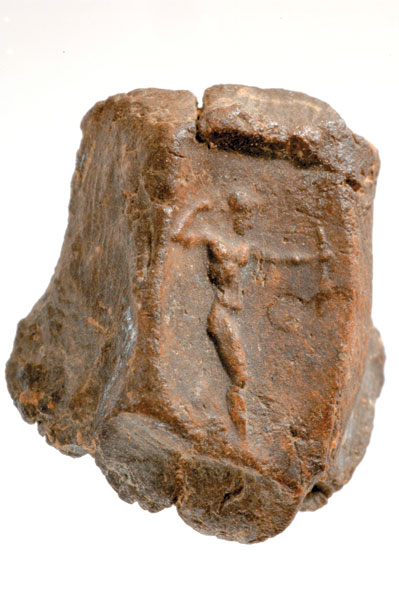
The Persians were driven out of the area by Alexander the Great in the mid-fourth century B.C.E. On his death Alexander’s empire in the east was divided among his generals, with the Ptolemies in the south (including Egypt) and the Seleucids in the north (including Syria). Again, Palestine was in the middle, often changing hands between the Ptolemies and Seleucids.
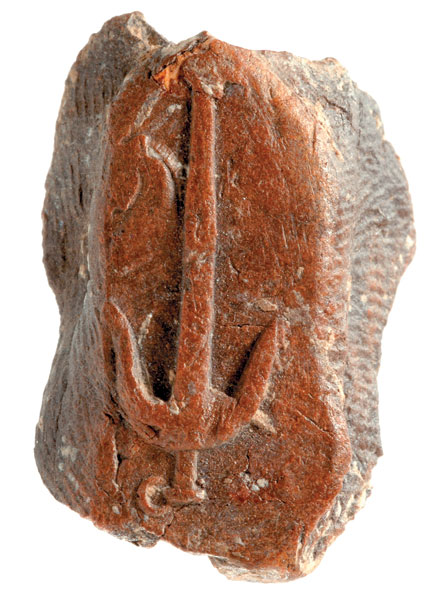
Kedesh, in the north, was under Seleucid hegemony, as was Palestine in this period. In the second century B.C.E., the Jews of Yehud, under the leadership of the Mattathias and his five sons (the Maccabees) revolted against their Seleucid masters. The Jews ultimately won their independence, an event still celebrated by Jews in the festival of Hanukah. But what of Kedesh during this time?

The Jewish historian Josephus and 1 Maccabees give us an account of this successful revolt, but they say little about the area around Kedesh, a region that was settled by the Phoenicians, whose cities of Sidon and Tyre on the Mediterranean coast continued to be important international ports. Although the sources describe the three-day raid on Kedesh site by Jonathan Maccabeus, they say almost nothing about the subsequent abandonment of the site.
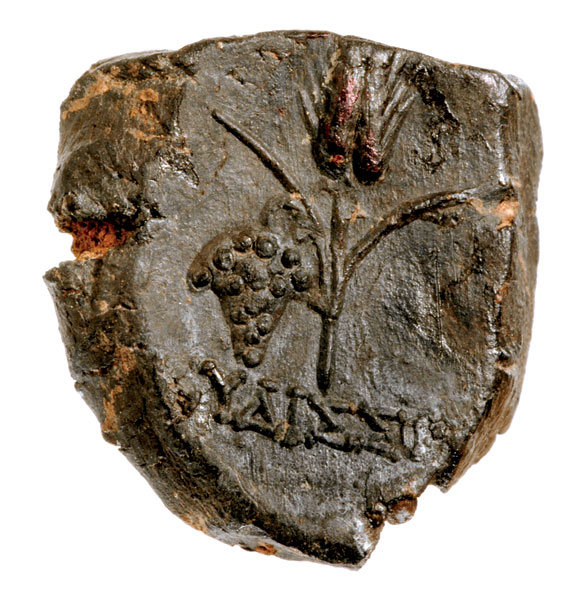
In the next season, we decided to expand the excavation to the remainder of the archive room in the northwestern corner of the large building we had discovered and also to explore the little house that we’d found in the 1997 probe trench. The big question we hoped to answer was: When was the large building built? Having confirmed the date at which it went out of use (or so we thought!), we now wanted to 042know when it began to be an administrative center. We naturally wanted to know whether the administrative building, whose last phase we had excavated, was there in the Persian period and what function it may have served. In order to determine when the building was built, we needed to excavate beneath an original wall or floor and recover datable material there.
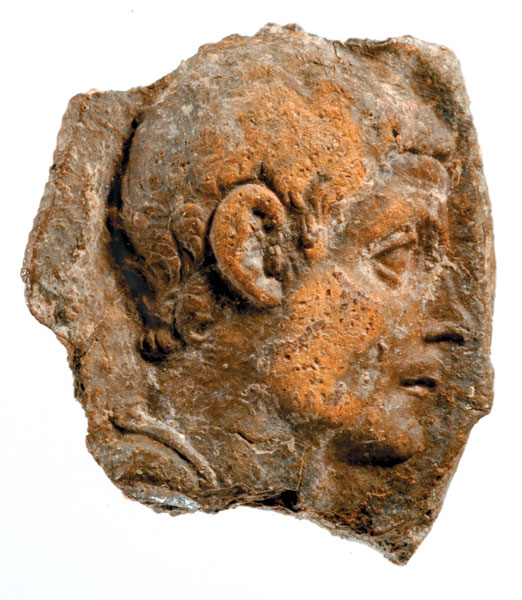
The outline of our building on the magnetometric map seemed to include a large, off-center courtyard. If such a feature in fact existed, it was likely part of the building’s original design. We decided to excavate where the courtyard ought to be, and then, if we found it, to excavate below the courtyard floor for the datable material underneath. It turned out that there was indeed a huge open court where the magnetometric map showed it would be, with a thick plastered floor that had been whitewashed repeatedly. To one side we found a small room packed with vessels appropriate for dining, including plates, cooking pots and casseroles, and Rhodian wine amphoras.
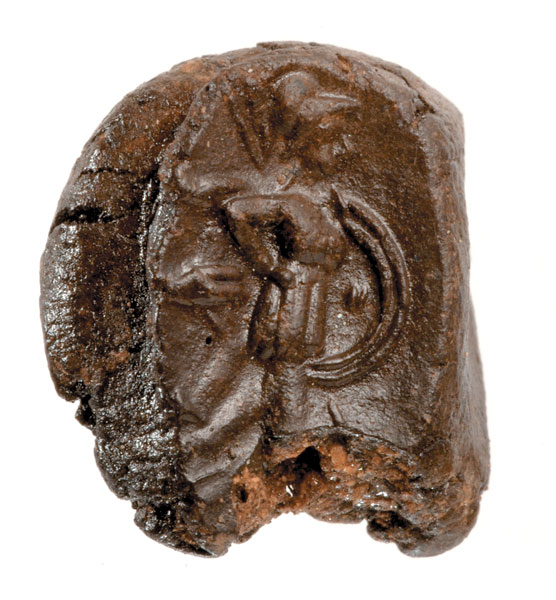
At the far end of our excavation trench, we dug beneath the thick plastered courtyard floor. This probe was small, and we didn’t find a lot of datable material—but everything that we did find dated to the Persian period. This suggests that our large second-century B.C.E. building follows the outline of a Persian-period predecessor, and that it must have been sometime during the fifth century B.C.E. that Kedesh attained its administrative status, requiring such a building. Was Kedesh, with its imposing administrative building, the capital of a separate Persian province, similar to the Persian provinces of Yehud and Samaria? Or was it part of the Phoenician province of Tyre? Kedesh’s social and economic affiliations seem to point to the latter possibility. But on the other hand, it could be said to have been in Upper Galilee.
The entrance to this large Persian-period administrative building at Kedesh was at the southernmost end of the site, oriented towards Galilee. This strongly indicates that the building was intended to serve the population of the Upper Galilee—and thus that the Persian king had granted Tyre control over an enormous territory.
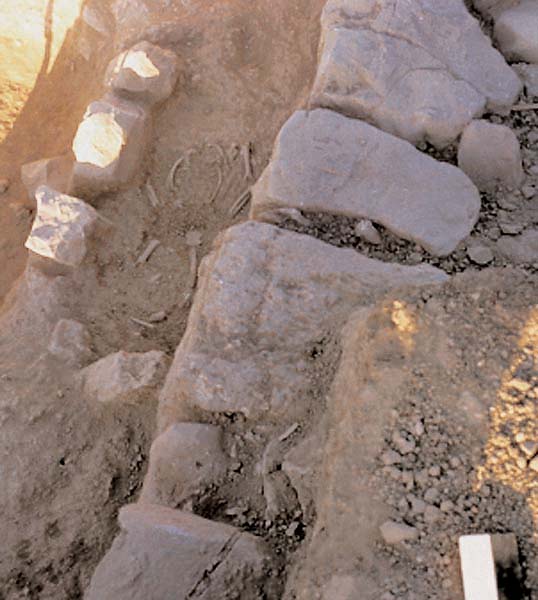
A glance at the international political situation will give a wider context to the matter. In the early fifth century B.C.E. the Persians were focused on one thing: extracting revenge on the Greeks, and especially on the Athenians. Hence the Persian Wars and the repeated invasions of Greece. Hence, also, the Persian need for a large and experienced fleet. Who better to supply ships and sailors than the Phoenician cities? No doubt the grateful Persians were happy to grant the Upper Galilee, with a capital at Kedesh, to the Tyrians in gratitude for their seafaring contribution to the Persian war effort against the Greeks.
Have we proved the case beyond a shadow of a doubt? No, but that is far as our present knowledge will take us. Perhaps future seasons will bring us surer—or a different—understanding of Kedesh in the Persian period. That is the nature of archaeology.
We also excavated the room south of the archive room, which we refer to as the “corridor,” and the remaining part of the archive room itself. The archive room was particularly rich. We found more than 700 043additional sealings, including the most spectacular of all: a beautiful image of a shaft of wheat and a bunch of grapes arranged over the Greek letters KYDISS. This can only be “Kydissos,” the Greek name of Kedesh.10 The sealing pictures depict agricultural products that are still cultivated near the site today. Apparently the site had a distinct-enough identity to merit its own sealing.
The archive room was particularly difficult to excavate because most of the room was packed with hard, almost whole, mudbricks from the collapsed upper walls that had been burned at so high a temperature that they had almost turned into fired clay. Iron roofing nails embedded in the mudbricks indicated that the walls had supported a wooden ceiling. Apparently a fire in the room had ignited the ceiling, which collapsed, bringing down the mudbrick walls. The burned mudbricks formed an almost impenetrable layer, securely sealing everything beneath, including something completely unexpected. Against the back wall, within a semi-circle of stones, we found the skeleton of an infant that had been carefully laid within this small grave. The life-like arrangement of the bones indicates a primary burial. But, strangely, none of the bones from the hands or the feet were present. Apparently, they were amputated prior to burial.11 We have no idea why.
The clay sealings we found there had also been burned; this firing is actually what preserved them. The fire in the archive had been uniquely intense. Even the stones that lined the walls of the archive room were fire-cracked, a clear sign of the fire’s intensity. This condition was highlighted by the contrast in the adjacent room where the stones were uncracked.
The fire in this room was not the work of Jonathan Maccabeus, but of some later attacker whose fire was limited to the archive room. We know this because whoever did it left unburned pots on the floor, and enough time elapsed before the final destruction of the archive room for a layer of soft silt to form on these unburned vessels. If Jonathan and his men stayed at Kedesh for only three days, that would not be enough time for the silt to accumulate on the unburned vessels on the floor.
Pondering who could have burned the archive room, we considered a suggestive parallel: On the eve of the First Jewish Revolt against Rome (66–70 C.E.), a group of Jerusalem Jews stormed the city’s record office and burned the documents inside.12 For the Tyrian administrators of Kedesh, targeting the archive room would have been a pointed expression of contempt for the Seleucid regime under which they lived and on whose behalf they served. A new sense of Tyrian autonomy and defiance also appeared at the same time in Tyre’s coinage. In 141 B.C.E., for the first time, Tyrian coins proclaim the city “holy” and “inviolate.”13
The site’s residents probably returned in the late 140s B.C.E.—after the battle between Jonathan and Demetrius. This scenario leads to one final, poignant comparison.
It is at this very time, in 142 B.C.E., that the Maccabees finally managed to expel the Seleucid garrison in Jerusalem and return the city to unopposed Jewish rule. The emotions and the drama of this episode in Jewish history are well known because a written account is preserved (1 Maccabees 13:49–52). Now we may conclude that it was not only the Jews who stood up to the Seleucids. So apparently did the Phoenicians. As a mark of their defiance they returned to now-abandoned Kedesh and set an intense fire in the archive room. If any Phoenician historian wrote an account of this event, we don’t know about it. What we’re missing in written records, however, we’ve made up for by excavation.
We are grateful to the Israel Antiquities Authority for providing us with new photos of the bullae.
When you look at a map, the first things you notice are borders. But what did borders mean in ancient times? In the mid-1990s, we became curious about that very question. Both of us had been excavating in Israel for more than 25 years—and during those years we’d always taken the importance of borders as a given. We began wondering, however, if we might not be imposing a modern sense of definiteness onto our view of life in antiquity. Just what did it mean to live on a border in, say, 200 B.C.E.? In archaeology, it’s easier to come […]
You have already read your free article for this month. Please join the BAS Library or become an All Access member of BAS to gain full access to this article and so much more.
Already a library member? Log in here.
Institution user? Log in with your IP address or Username
Endnotes
1.
See Joshua 12:22, 19:37.
2.
Kedesh is cited twice in the Zenon papyri (P. Cairo Zen. I 59.004); see W.L. Westermann, C.W. Keyes and H. Liebesny, Zenon Papyri (New York: Columbia Univ. Press) vol. 2. Both texts apparently date to 259 B.C.E.
3.
Josephus, Antiquities 13.154-62; War 2.459, 4.104).
4.
Jonathan Goldstein (I Maccabees, Anchor Bible Series 41, [Doubleday, Garden City, NY: 1976], p. 170) dates this battle to September 145 B.C.E., though nothing in the text precludes a date of 144 or even early 143 B.C.E.
5.
See M. J. W. Leith, Wadi Daliyeh: The Wadi Daliyeh Seal Impressions, Discoveries in the Judaean Desert 24 (Oxford: Oxford Univ. Press, 1997).
6.
Nahman Avigad, Hebrew Bullae from the Time of Jeremiah (Jerusalem, Israel Exploration Society, 1986); P. Kyle McCarter, Jr., Ancient Inscriptions: Voices from the Biblical World (Washington D.C.: Biblical Archaeology Society, 1996), pp. 147–149.
7.
A. Invernizzi, “Portraits of Seleucid Kings on the Sealings from Seleucia-on-the-Tigris: Reassessment,” Bulletin of the Asia Institute 12, pp. 105–112; R. Wallenfels “Private seals and sealing practices at Hellenistic Uruk,” Archives et Sceaux du Monde Hellénistique, eds. M.-F. Boussac, M.-F. and A. Invernizzi, Bulletin de correspondance héllenique, Supplement 29, pp. 113–130.
8.
For a detailed discussion of this and other inscribed sealings, see Donald Ariel and Joseph Naveh, “Selected Inscribed Sealings from Kedesh in the Upper Galilee,” Bulletin of the American Schools of Oriental Research 329 (2003), pp. 61–80.
9.
Josephus Antiquities 13.11.3.
10.
On this seal, see the article by Ariel and Naveh cited in note 8.
11.
We know of only one ancient mention of similar amputation: in 2 Samuel 4:12, David has the hands and feet of the murderers of Ish-bosheth cut off.
12.
Josephus, War 2.327; see also 6.354.
13.
J. D. Grainger, Hellenistic Phoenicia (Oxford: Clarendon Press, 1991), p. 125.

